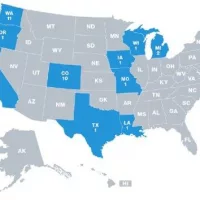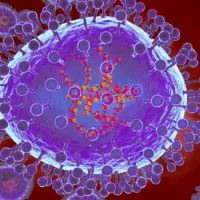
(NEW YORK) — More than 40,000 graduating medical students learned Friday where they will spend the next three to seven years of their medical training.
With the United States grappling with a simultaneous shortage of primary care physicians and a rural health care crisis, many of the graduating students are set to enter the front lines of the country’s health care shortage.
At least 136 rural hospitals and health systems closed between 2010 and 2021, and over 40% of rural hospitals operate with negative profit margins. Despite billions of dollars in investment in health care, hospitals throughout the United States face the possibility of shutting down.
“I would say it is probably the worst time for health care that we ever experienced,” Joanne Conroy, the chief executive officer and president of Dartmouth Health, told ABC News. She noted that increased costs, inflation, limited housing, and workforce shortages have made running rural hospitals more challenging.
“We know what to do if we face another pandemic,” Conroy said. “The question is whether or not we have the financial resilience in order to survive it.”
Many hospitals that remain open have cut costs to survive, offering fewer services and beds.
In 2020, 47% of rural community hospitals did not provide obstetric services, with 89 obstetric units closing between 2015 and 2019. Seven million women reside in counties with limited or no access to maternity care, impacting half a million newborns annually.
According to Conroy, patients can already feel the impact of the crisis, noting that some women in New Hampshire need to drive two hours to deliver their babies. Other effects include fewer available beds in emergency rooms, delays for elective surgery and longer wait times for prescriptions or ambulance pickups.
For new medical professionals entering their residency, especially those joining rural systems, the circumstances of the struggling health systems are out of their control.
“It is not my job to fix all of the problems for an entire community, that’s impossible. When you feel like that’s your responsibility, burnout is basically inevitable,” said Katie Stevenson, a Tufts medical student. “When you feel like your goal is to do the best you can with the resources you have, you are able to right-size your expectations a bit.”
An increasing number of students are entering medical school programs that focus on rural medicine. In 2019, the Health Resources and Services Administration issued grants to create 32 newly accredited rural residency programs, supplementing the preexisting programs.
This year, Tufts School of Medicine will graduate its tenth class of students from its Maine Track MD program – a partnership with Maine Medical Center that allows students to pursue a community-based curriculum and gain financial incentives to encourage primary-care specialties.
Graduating roughly 40 students annually, 27% of Maine Track students have been matched to programs in Maine and 47% have been matched into primary care programs, according to Dena Whitesell, an assistant dean for students at Tufts and psychiatrist at Maine Medical Center.
“We know that students and residents who live in an area [and] who train in an area are more likely to practice in that area in the future,” Whitesell said.
Liv Fauver, a Tufts student who matched with a University of Vermont residency program, grew up in rural New Hampshire and said she felt motivated to work in a similar community where she could positively impact the local residents.
“I think for me, my goal is to live and work in the community that I serve,” she said. “So I’m really in a place where I go home or go to the grocery store and see my patients all the time, because that’s the world that I live in and work in.”
While rural hospitals have closed in record numbers, PCPs – medical professionals who patients regularly use for checkups and other routine care – face additional challenges, especially in rural areas, according to experts.
Greg Sawin, a PCP who has practiced in Massachusetts and Maine as well as Duke University School of Medicine professor, said he worries that the goals of primary and long-term preventative care can sometimes be at odds with larger health care systems.
“We get paid to do things to people. We don’t get paid to keep populations healthy,” he said.
Moreover, he believes the costs associated with medical schools – including the high cost, the likelihood of incurring debt and substantially higher pay to pursue competitive specialties like orthopedic surgery or dermatology, for example – disincentivize primary care options like family or internal medicine.
“It can be very appealing to want to go into a specialty where you’re guaranteed to make more money and pay that debt off more easily,” Stevenson said.
Owen Foster lives in rural Vermont and has felt the impact of the decreased number of available PCPs, spending six months to book an appointment with a doctor. Living in a rural area, Foster shares his dilemma with millions of Americans in rural areas impacted by the shortage of PCPs.
“You need basic things at certain intervals in your life,” he told ABC News. “If you don’t have a primary care provider, you can’t get that and you can’t get the referrals you need, so it’s really, really difficult.”
What makes Foster’s experience unique is his position as the state of Vermont’s top health care regulator. As chair of Vermont’s Green Mountain Care Board, he oversees the quality and cost of the state’s health care system.
Learning about the shortage of primary-care physicians in Vermont, Foster decided to use the opportunity to find a PCP as a chance to examine the market as a “secret shopper.”
“What I found was I was completely incapable of getting a doctor,” he said. “I called eight places and the best I got was on an indefinite wait list, which never came to fruition.”
Rural areas comprise about two-thirds of the primary care health professional shortage areas nationwide, even though only 20% of Americans live in rural areas.
The problem is also likely to worsen over time. Projections indicate that the United States will likely suffer a shortage of between 17,800 and 48,000 PCPs by 2034.
Moreover, health care professionals believe that the shortage of PCPs can make other elements of health care more expensive and worsen overall patient outcomes. Sawin gave the example of a person getting strep throat. Without a PCP, the person might go to a local hospital emergency room, which is significantly more expensive than other treatment options.
“In terms of mismatch of resources, you know, a kid with strep throat showing up in the ER is like cutting butter with a chainsaw,” Sawin said.
Foster added that primary care providers are “critical to controlling the costs of a health care system” due to their role in the early identification of issues, their ability to diagnose mental health issues, and their approach to preventative medicine.
According to Foster, PCPs in rural areas, however, struggle to find and retain staff, negotiate with insurance companies and prevent burnout. The shortage of PCPs, combined with the increased health care needs of the older population in rural areas, creates a concerning combination.
Despite these issues, Foster said he was optimistic about some approaches to make primary care more financially feasible, including adding a floor for PCP spending within health plans and government involvement in rate setting.
A new generation of students graduating from rural track programs also has the potential to reverse the tide of the PCP shortage in rural areas, with 571 additional primary care matches this year. Stevenson, for example, matched with the Swedish Cherry Hill rural program in Washington state.
“I think we have an opportunity in this country to do a much better job of taking care of our patients if we do a better job of funding primary care and preventative care and creating healthy environments,” Stevenson said.
Copyright © 2023, ABC Audio. All rights reserved.















